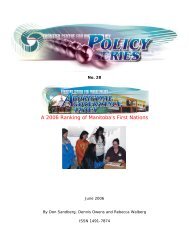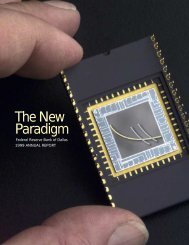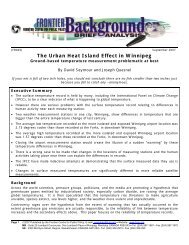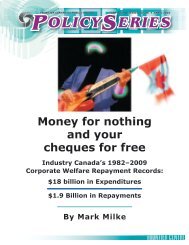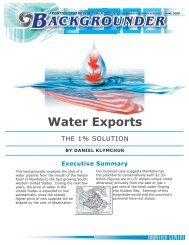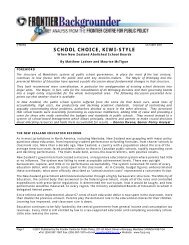The New Paradigm - Federal Reserve Bank of Dallas
You also want an ePaper? Increase the reach of your titles
YUMPU automatically turns print PDFs into web optimized ePapers that Google loves.
19<br />
Exhibit 13<br />
Bigger Is Better<br />
Never has the number <strong>of</strong> corporate mergers and acquisitions<br />
been higher. Advances in information management and communication<br />
have helped firms cut costs by consolidating output into<br />
larger operations. Technology has made higher output the key to<br />
lower prices across many industries.<br />
U.S. Mergers and Acquisitions<br />
Thousands<br />
10<br />
8<br />
6<br />
4<br />
2<br />
0<br />
’72 ’76 ’80 ’84 ’88 ’92 ’96<br />
system is big enough to serve a critical mass. This has<br />
always been true for telephones, trucking routes, airlines,<br />
television and electricity. Now it also applies to the Internet,<br />
media and telecommunications, all industries on the<br />
economy’s leading edge.<br />
Finally, the Information Age is largely a world <strong>of</strong> high<br />
fixed and low marginal cost. Modern technology <strong>of</strong>ten<br />
requires staggering startup costs, with tens or even hundreds<br />
<strong>of</strong> millions <strong>of</strong> dollars going to design products, recruit<br />
workers, purchase equipment and establish a presence in<br />
the marketplace. Once in production, however, delivering<br />
additional goods or services is typically rather cheap.<br />
Consider prescription drugs. It requires an average $350<br />
million to bring a new pill to market. At that price, the cost<br />
<strong>of</strong> producing the first dose is exorbitant. If it takes a penny<br />
to produce each additional one, though, average production<br />
costs fall quickly—to $350 each at 1 million pills,<br />
$3.51 at 100 million and 4¢ at 10 billion. (See Exhibit 14.)<br />
For about $60, pet owners can have a biocompatible glass capsule<br />
about the size <strong>of</strong> an uncooked grain <strong>of</strong> rice implanted between their<br />
pet’s shoulder blades. A tiny memory chip inside the capsule acts as a<br />
miniature transponder that relays information via low-frequency radio<br />
signals. With the help <strong>of</strong> a special scanner (about $400), veterinarians,<br />
animal shelters and the like can tap into a nationwide database <strong>of</strong> pet<br />
owners, their addresses and phone numbers, plus the animals’ characteristics,<br />
pedigree, medical history and more. Not only does the system<br />
make locating a lost pet much easier, it has made pet insurance affordable<br />
since conclusively identifying Fido is now possible.<br />
Keeping track <strong>of</strong> livestock can mean big savings for ranchers. With<br />
the help <strong>of</strong> electronic “ho<strong>of</strong> meters,” today’s high-tech dairy farmer can<br />
check on the whereabouts <strong>of</strong> any one <strong>of</strong> his cows by double-clicking on<br />
the animal’s face on a computer monitor. <strong>The</strong> history <strong>of</strong> each cow’s food<br />
and medicine intake, weight, milk yield and even temperature is<br />
instantly available from a comfortable remote location. What once took<br />
a legion <strong>of</strong> workers now takes just one.<br />
<strong>Federal</strong> <strong>Reserve</strong> <strong>Bank</strong> <strong>of</strong> <strong>Dallas</strong> 1999 ANNUAL REPORT




